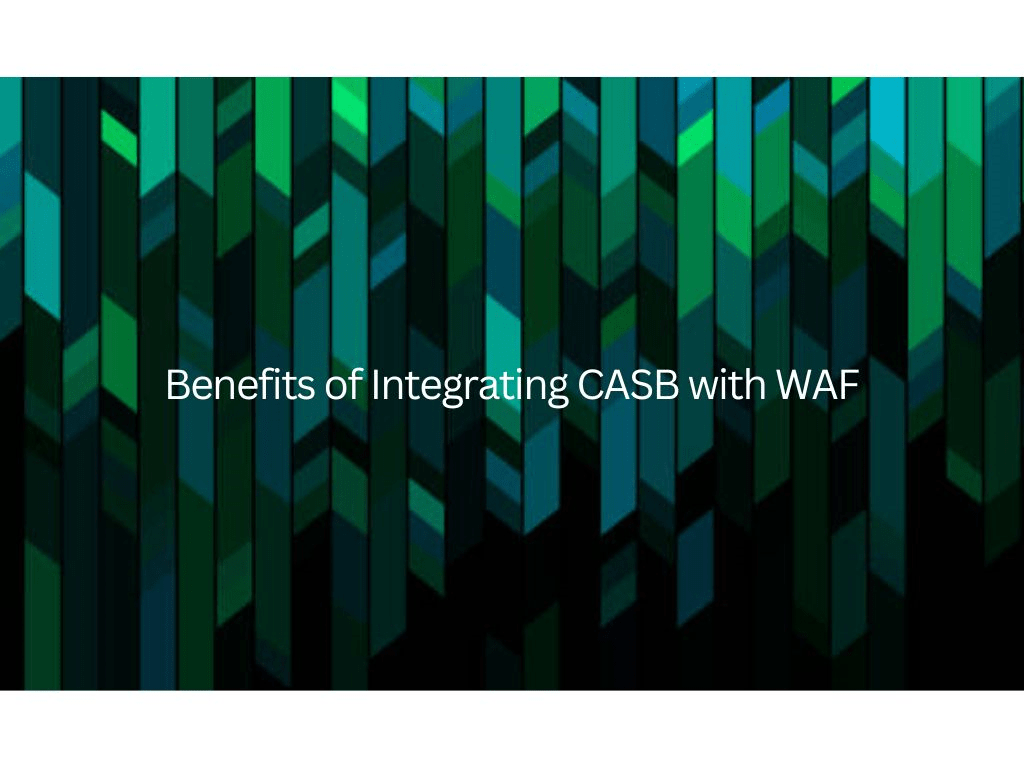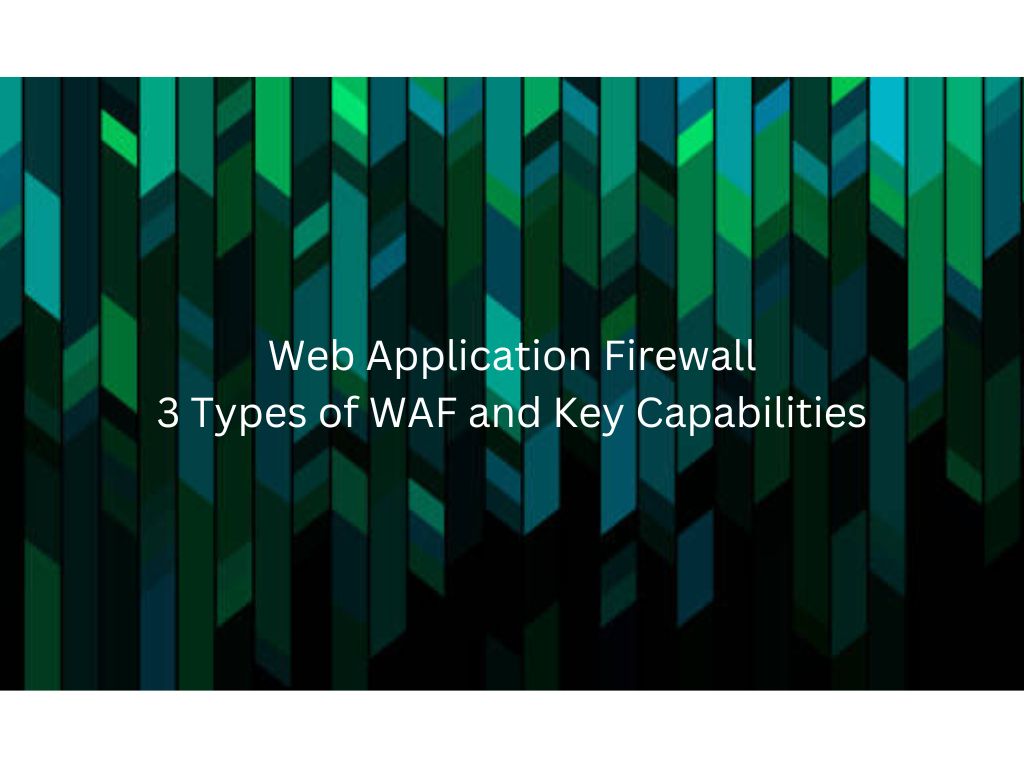In today’s digital landscape, organizations face an ever-increasing number of cyber threats, especially when it comes to securing cloud-based environments. Cloud Access Security Broker (CASB) and Web Application Firewall (WAF) are two critical security solutions that organizations can leverage to protect their cloud applications and data. When integrated, CASB and WAF can provide enhanced security capabilities and better defense against cyber threats. In this article, we will explore the benefits of integrating CASB with WAF in more detail.
- Comprehensive Threat Protection: CASB and WAF each have unique capabilities that complement each other to provide comprehensive threat protection for cloud environments. WAF focuses on securing web applications by monitoring and filtering web traffic to detect and block attacks such as XSS, SQL injection, and CSRF. On the other hand, CASB provides visibility, control, and threat protection for cloud applications and data, including data loss prevention (DLP), access controls, and threat detection. By integrating CASB with WAF, organizations can establish a layered defense strategy covering both web and cloud applications, providing more robust protection against cyber threats.
- Granular Access Controls: CASB allows organizations to define granular access controls for cloud applications and data, ensuring that only authorized users can access sensitive information. By integrating CASB with WAF, organizations can extend these access controls to web applications as well. This means that organizations can enforce consistent security policies across both cloud applications and web applications, reducing the risk of unauthorized access or data exfiltration. Granular access controls help organizations achieve a fine-grained level of security, allowing them to tailor access permissions based on user roles, locations, devices, and other parameters, providing an added layer of protection against potential security breaches.
- Compliance and Regulation Management: Compliance with various regulations and industry standards is a critical requirement for many organizations. CASB provides capabilities to monitor and enforce compliance policies for cloud applications and data, helping organizations meet regulatory requirements such as GDPR, HIPAA, and PCI-DSS. By integrating CASB with WAF, organizations can extend these compliance policies to web applications as well. For example, CASB can detect sensitive data in web traffic and prevent its transmission, ensuring compliance with data protection regulations. The integration of CASB with WAF allows organizations to achieve consistent compliance and regulation management across both cloud applications and web applications, minimizing the risk of compliance violations and associated penalties.
- Centralized Management: Managing security policies for cloud applications and web applications separately can be challenging and time-consuming. The integration of CASB with WAF provides the benefit of centralized management, allowing organizations to manage their security policies from a single console. This streamlined approach simplifies security management, reduces the risk of errors, and improves overall security posture. With a unified management console, organizations can view and control security policies, access controls, and threat detection settings for both cloud applications and web applications, making it easier to implement consistent security policies across the entire IT environment.
- Improved Visibility and Analytics: Visibility into cloud applications and web applications is crucial for effective security monitoring and incident response. CASB provides insights into user activity, data usage, and anomalous behavior in cloud applications, while WAF provides visibility into web traffic patterns, application usage, and potential threats. By integrating CASB with WAF, organizations can gain improved visibility and analytics capabilities, allowing them to detect and respond to security incidents more effectively. The combined insights from CASB and WAF can provide a holistic view of the organization’s security posture, enabling better decision-making and proactive threat mitigation.
- Enhanced Threat Detection and Response: The integration of CASB with WAF enables organizations to enhance their threat detection and response capabilities. CASB and WAF can work together to detect and block suspicious activities, such as unauthorized access attempts or malicious web traffic, in real-time. For example, CASB may detect an unusual login attempt to a cloud application, while WAF may detect a suspicious pattern of web traffic to a web application. When integrated, CASB and WAF can correlate these events and provide a more accurate and comprehensive view of potential security threats. This allows organizations to respond promptly and effectively to security incidents, minimizing the risk of data breaches or other security breaches.
- Advanced Threat Intelligence: CASB and WAF leverage advanced threat intelligence to enhance their threat detection capabilities. CASB utilizes machine learning algorithms and threat intelligence feeds to detect known and unknown threats in cloud applications, while WAF uses threat intelligence feeds and signature-based detection to identify known web application attacks. When integrated, CASB and WAF can share threat intelligence and collaborate in real-time, allowing organizations to stay ahead of emerging threats. This helps organizations to proactively identify and mitigate potential threats across both cloud applications and web applications, reducing the risk of security breaches.
- Scalability and Flexibility: CASB and WAF can be deployed in various configurations, depending on the organization’s requirements and infrastructure. They can be deployed in the cloud, on-premises, or in a hybrid environment. The integration of CASB with WAF provides scalability and flexibility, allowing organizations to adapt their security architecture to their changing needs. For example, organizations can choose to deploy CASB and WAF in the cloud for a fully cloud-native security solution, or deploy them on-premises for a more traditional approach. The integration of CASB with WAF allows organizations to tailor their security architecture to their unique requirements, ensuring maximum protection for their cloud applications and web applications.
- Cost-Effectiveness: Integrating CASB with WAF can provide cost-effective security for organizations. By leveraging the capabilities of both CASB and WAF, organizations can avoid duplicating security efforts and investments. This can result in cost savings in terms of infrastructure, licensing, and maintenance. Additionally, a unified management console for CASB and WAF can streamline security management processes and reduce administrative overhead, further improving cost-effectiveness. Organizations can achieve robust security for their cloud applications and web applications without incurring unnecessary costs by integrating CASB with WAF.
In conclusion, integrating CASB with WAF provides significant benefits to organizations in securing their cloud applications and web applications. It offers comprehensive threat protection, granular access controls, compliance and regulation management, centralized management, improved visibility and analytics, enhanced threat detection and response, advanced threat intelligence, scalability and flexibility, and cost-effectiveness. By leveraging the strengths of both CASB and WAF and integrating them into a cohesive security architecture, organizations can strengthen their security posture, reduce the risk of cyber threats, and protect their valuable data and applications from potential breaches. It is essential for organizations to consider integrating CASB with WAF as part of their overall cloud security strategy to achieve a robust and holistic security posture in today’s dynamic and ever-evolving threat landscape.




